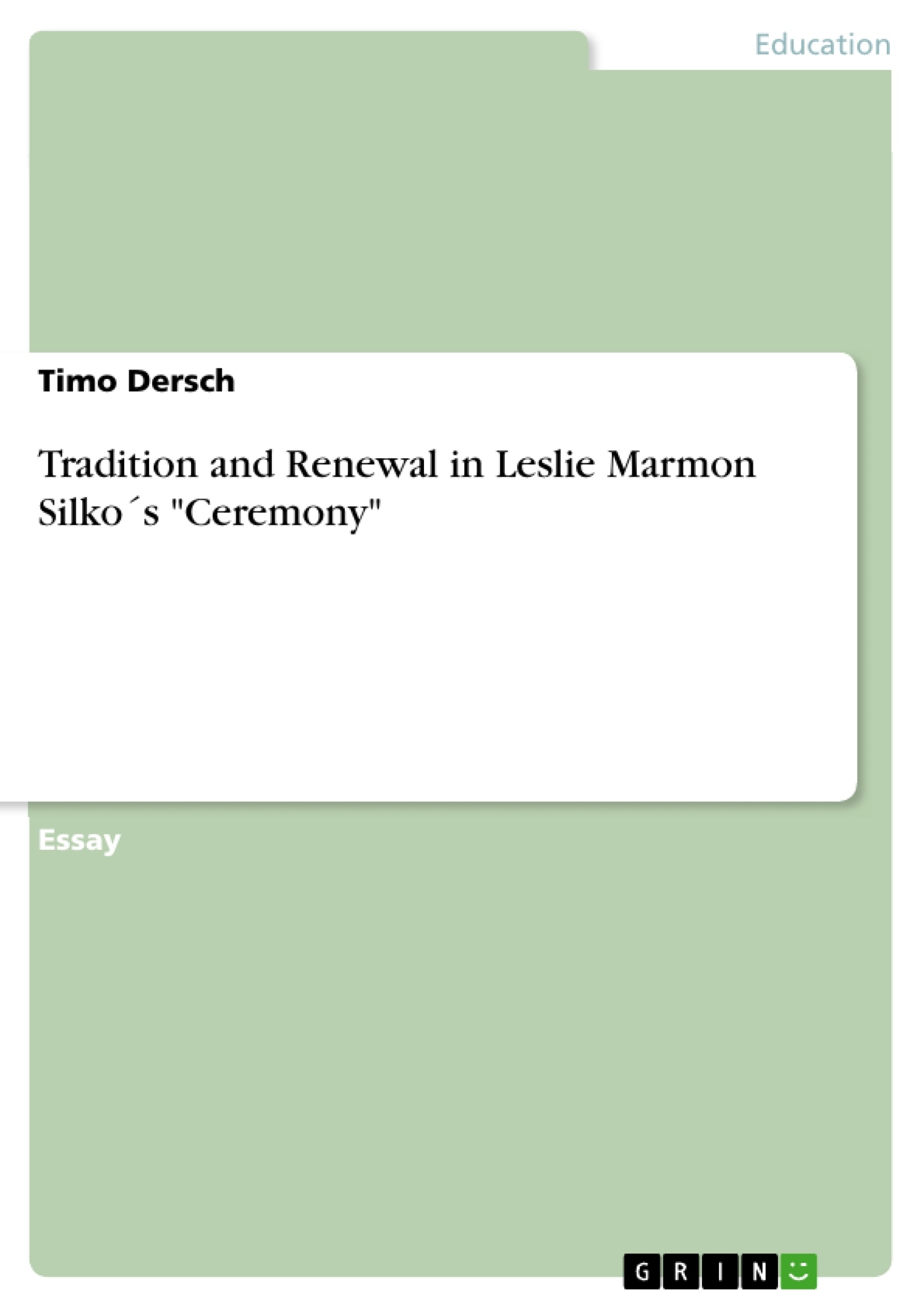Leslie Mormon Silko, a Native American writer, grew up at the edge of the Laguna Pueblo Reservation, New Mexico, USA. Because of her mixed origins and for the fact that she was not living directly in the reservation and thereby in the pueblo society, she was not allowed to attend several rituals. Silko´s roots are Native American, Anglo American and Mexican American but she was raised and educated by her grandmother and aunts with the traditional Laguna stories. This led to a strong identification of her with the native part of her ancestry and to her writing, which always deals with Native American topics. Her writing includes autobiographical parts and lots of relations to tradition which only a member of this particular native tribe could describe as precisely as she does. In “Ceremony”, her highly regarded 1977 novel, these traditional relations seem to play an important role. The following essay will show how the importance of tradition for the Native American communities is expressed in the novel, and how it is responsible for the healing of the main protagonists illness.
Inhaltsverzeichnis (Table of Contents)
- Tradition and Renewal in Leslie Marmon Silko’s Ceremony
- Introduction
- Silko's Background and Connection to the Laguna Pueblo
- Tayo and the Trauma of War
- Healing Through Traditional Medicine
- Betonie, the Medicine Man and Shifting Traditions
- Tayo's Illness and the Importance of Connection to the Land
- Witchery and the White World
- Conclusion
Zielsetzung und Themenschwerpunkte (Objectives and Key Themes)
This essay explores the role of tradition and renewal in Leslie Marmon Silko's novel *Ceremony* and how these themes are interwoven with the healing process of the protagonist, Tayo. The essay examines the importance of traditional Native American medicine and its ability to address the psychological trauma experienced by Tayo, a war veteran suffering from post-traumatic stress disorder. Key themes covered in this essay include:- The significance of Native American tradition in healing and coping with trauma
- The impact of the war on Tayo and the importance of returning to his roots
- The concept of shifting traditions and the need to adapt to changing circumstances
- The portrayal of the white world as an oppressive force within the Native American community
- The need to reconcile with the past and find a way to coexist with the oppressors
Zusammenfassung der Kapitel (Chapter Summaries)
This section provides summaries of the chapters, focusing on the main themes and narrative elements, without revealing major spoilers. The essay starts by providing context to Silko's background and her strong connection to the Laguna Pueblo tribe, setting the stage for the exploration of the novel's key themes. The following chapter dives into the story of Tayo, the protagonist, and his experiences during World War II, particularly his participation in the Bataan Death March. The essay then delves into the psychological trauma that Tayo suffers upon returning home, highlighting the lack of available medical treatment for PTSD and the turn towards traditional medicine. The focus shifts to Betonie, the medicine man, and his unique approach to healing, emphasizing the adaptation of traditional ceremonies to address contemporary challenges. The essay continues to explore the significance of Tayo's connection to the land and the impact of separation from his roots on his mental well-being. It examines the concept of witchery as a symbol of the white world and its negative influence on the Native American community. While emphasizing the destructive forces of colonialism, the essay highlights Silko's message of reconciliation and the importance of maintaining traditions in the face of oppression.
Schlüsselwörter (Keywords)
This essay explores the intersection of trauma, tradition, and renewal in *Ceremony* through the lens of post-traumatic stress disorder, Native American healing practices, the Laguna Pueblo tribe, and the impact of colonialism on Native American communities. The essay examines the significance of adaptation and the need to embrace shifting traditions in the face of cultural and social change. Key concepts include the importance of connection to the land, the role of ceremony in healing, the concept of witchery, and the challenge of coexisting with the oppressors while preserving one's cultural identity.- Quote paper
- Timo Dersch (Author), 2011, Tradition and Renewal in Leslie Marmon Silko´s "Ceremony", Munich, GRIN Verlag, https://www.grin.com/document/166745



